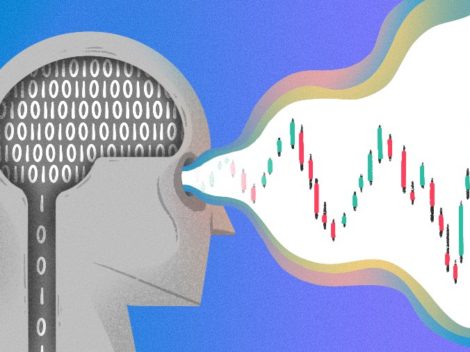As the co-founders of a Silicon Valley-based map technology company, and early pioneers in mapping at Google and Apple, we have been engaged in the development of large-scale maps to improve navigation and mobility for a long time.
Subscribe to the Crunchbase Daily
The era we are entering now promises to be the most exciting — and transformative — yet, as numerous advancements in technology are bringing the promise of semi-autonomous and autonomous driving systems within commercial reach.
These advancements are accelerating the need for a new generation of smarter maps made for machines, by machines. These smart maps are referred to by different terms, including high-definition, high-precision, highly detailed and AV (autonomous vehicle) maps. In this article we will use the term high-definition (HD).
2021 is already a watershed year in the evolution toward semi-autonomous and autonomous vehicles. According to analyst firm VSI Labs, at least 15 top automakers have either started producing or plan to produce vehicles with some level of autonomy baked in, from “hands-off” to “eyes-off” driving.
Building upon today’s driver assistance advancements — such as parking assistance — and early versions of freeway-based self-driving, we have seen dizzying investments and acquisitions in electric vehicles, robotaxi technology, autonomous trucking and LiDAR companies, with sensors that will serve as the “eyes” of our future transport.
Today, many of these ambitious projects are limited to smaller test venues or pilot cities. In order for higher-level autonomous features in cars, trucks and robotaxis to roll out broadly and commercially, the next critical capability in the stack will be the HD maps that enable self-driving vehicles to do what they do.
Maps built for machines, not people
Maps have traditionally been designed by humans, for humans, but a new era of innovation is underway that focuses on maps for machines. When humans drive a car, maps serve one major function: Helping us understand where we are, where we want to go, and how to navigate there. Even with a map, people still use their eyes, memory and judgment to interpret the environment, understand where they are, and actually drive the car.
For autonomous vehicles, on the other hand, maps need to be far more capable and comprehensive. They need to not only depict the road for purposes of navigation and understand exactly where the car is on the road, but to interpret and explain the road’s rules and physical characteristics well enough that the vehicle can understand how to safely and expertly drive it.
Created by aggregating sensor perception data from car-mounted cameras, radar and LiDAR, HD maps contain 3D depictions of the road and surrounding environment, as well as rich semantic information such as road signs, lane markings and connectivity, road properties, and much more.
Combined with navigation information, these enriched maps serve as the computer’s collective understanding of the drivable road environment, in essence serving as the car’s “memory.”
Just as we humans intuitively “know” a road or city we have driven many times before and can more expertly and safely drive it than if we had never been there, maps enable an autonomous vehicle to have expert foreknowledge of an environment as if it had been there many times.
The map is the aggregate knowledge of a road crowd-sourced from all the cars and sensors that have ever traversed it. Thus, the map becomes a core component of the self-driving car’s brain.
HD maps, an opportunity for collaboration
The transportation industry recently invested breathtaking sums into LiDAR. In order to truly take advantage of this new perception power being added to production vehicles, it will be critical for vehicle makers to utilize map technology that is as high fidelity as the powerful sensors they are incorporating.
The far larger benefit will come when the sensors on the car, and the map — the model of the environment to which the sensors are comparing what they see — are equally rich. This is why we see almost all auto-makers that are developing both advanced driver assistance systems and autonomous driving systems already incorporating HD maps, enabling additional features while increasing performance and safety.
Historically, building high-definition maps was a large and expensive undertaking. Now, with newer mapping engine platforms that leverage state-of-the-art AI and mapping technology built from the ground up for machines, it is possible to create the large-scale, fresh, accurate, open and economical maps the transportation industry needs to truly advance to higher levels of autonomy.
James Wu is co-founder and CEO and Mark Wheeler is co-founder and CTO of Palo Alto, California’s DeepMap, a global leader in autonomous driving technology.
Wu built his career at Baidu, Apple and Google. At Baidu, he served as principal architect for the self-driving car team. While at Apple, he launched Apple 3D Buildings, and at Google he was a core member of Google Earth and Google Maps teams.
Wheeler was a tech lead manager at Google, where he led Google Geo enterprise products, including the creation of Google Maps Engine (GME).
Illustration: Dom Guzman

Stay up to date with recent funding rounds, acquisitions, and more with the Crunchbase Daily.






![Illustration of a guy watering plants with a blocked hose - Global [Dom Guzman]](https://news.crunchbase.com/wp-content/uploads/quarterly-global-3-300x168.jpg)
67.1K Followers